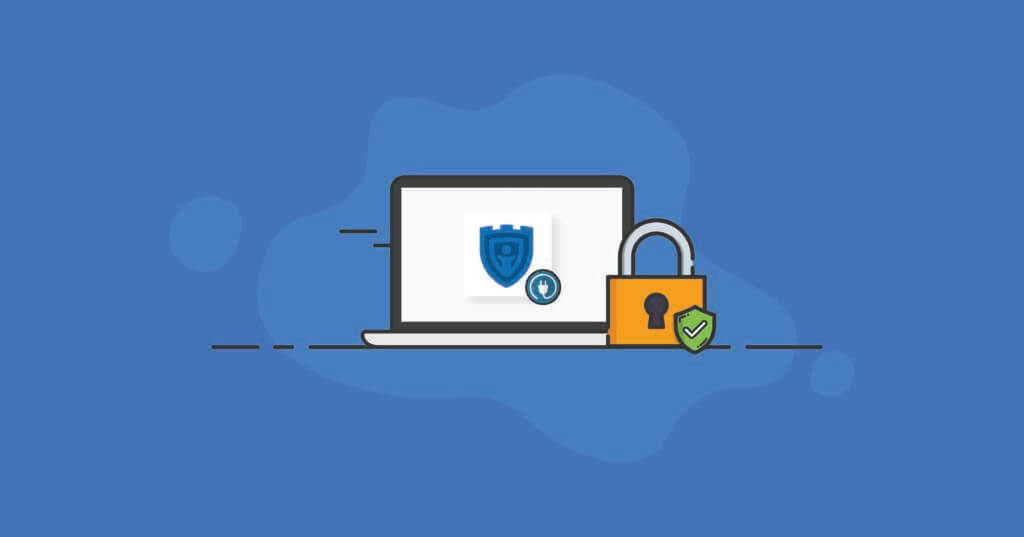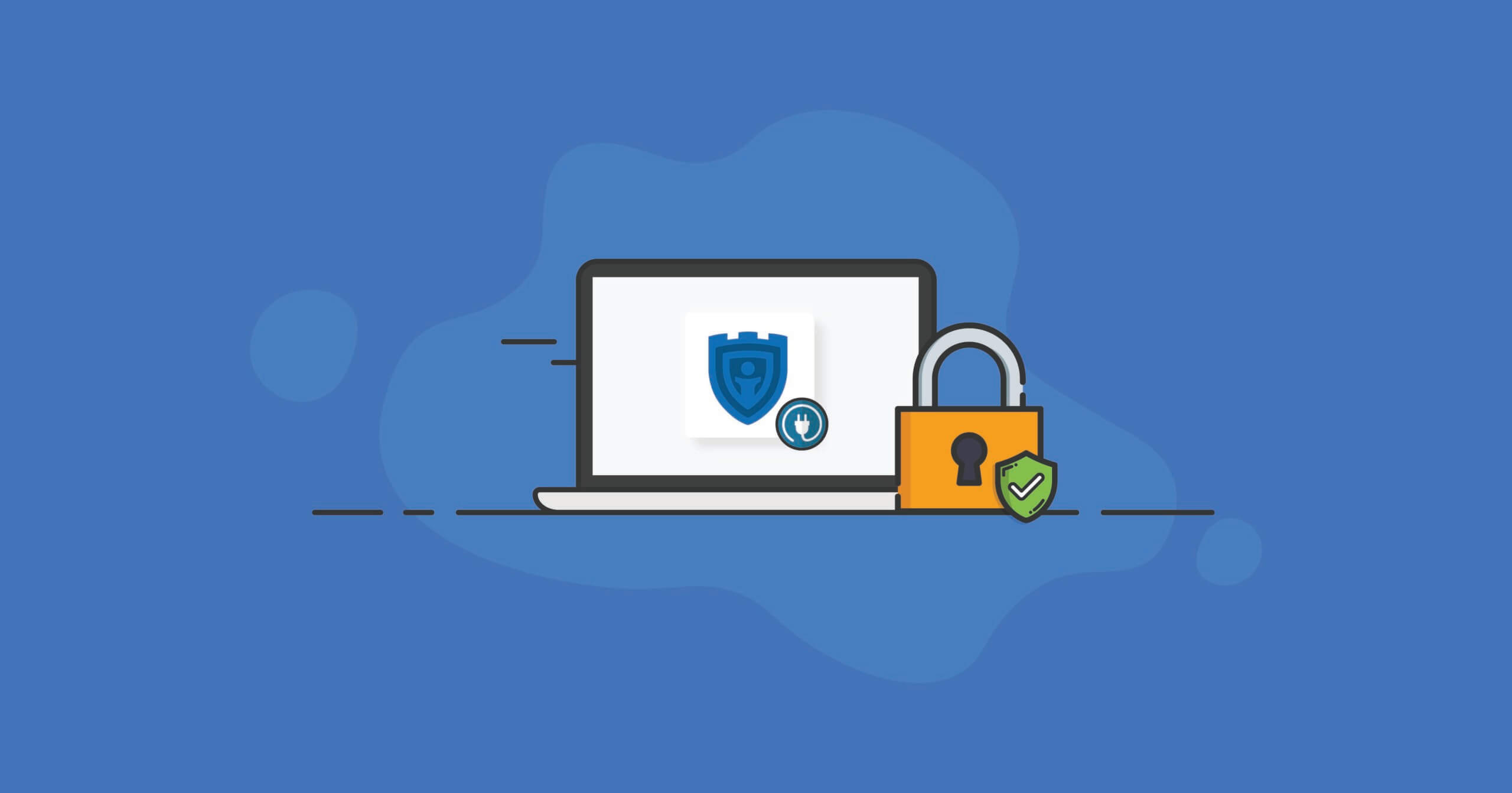Have you ever heard of a zero-day vulnerability or a zero-day attack on a WordPress site?
If not, you’re not alone.
While WordPress site owners typically have a strong understanding of WordPress security and the measures required to maintain a secure site, it’s almost impossible to keep track of all of the different attacks your site might be under.
Brute force attacks, cross-site scripting, DDoS attacks, spambots, and malware are all substantial threats to the security of your WordPress site. A zero-day vulnerability or zero-day attack can be any of these things and can blindside site owners who haven’t prepared.
In this guide, we’ll explain the details of a zero-day vulnerability and what you can do today to work around one before it becomes a major problem for your site.
After all, knowing is the first step to overcoming.
Now, let’s dive in.
What Exactly Is a Zero-Day Vulnerability?
Stated as simply as possible, a zero-day vulnerability is a security flaw in software that a software vendor isn’t fully aware of yet, and hasn’t created a new patch in their software to repair the issue.
Because the zero-day vulnerability has yet to be repaired by the software vendor, it can be maliciously exploited by knowledgeable hackers and cybercriminals.
In cyber security land, a vulnerability is a flaw that a software vendor or creator didn’t intend. These vulnerabilities may be found in operating systems, programs, WordPress themes, or WordPress plugins. A software security vulnerability could be the direct result of errors in software programming, or incorrect security and computer configurations.
Hackers can then use these vulnerabilities and holes in programming to exploit your site and gain unauthorized access to it.
When this type of security breach happens, your WordPress site could be used by hackers to expose private data, redirect to harmful websites, or spam your site users with unwanted information.
Your site could also be taken down completely by your web host or blacklisted as a harmful site by Google.
As you can see, vulnerabilities in the software you use on your site, whether the software is WordPress core, your themes, or your plugins, can have a significant negative impact on your site and user experience if the vulnerabilities are left unchecked.
Because zero-day vulnerabilities haven’t yet been discovered by software authors, they can be particularly troublesome.
But there are some easy solutions.

Why Software Vulnerabilities Cause Security Risks
Internet hackers tend to be a resourceful group of people. They write specific code that directly targets obvious weaknesses in software security that the layperson isn’t aware of.
After writing their malicious code to exploit new vulnerabilities, they’ll package it together into malware. This is referred to as a zero-day exploit.
This type of malware software works to take advantage of vulnerabilities, with the intent of compromising a website or computer system.
The ultimate goal is to cause unintended behavior in the software targeted by a zero-day exploit. Fortunately, in the vast majority of cases, a patch or update from the developer of the software will fix the problem and keep the attack from succeeding.
But what should you do if your WordPress site ends up infected by this type of attack? Zero-day exploit malware has the potential of stealing your data, which may allow a cybercriminal to take full and unauthorized control of your website.
Software compromised by a zero-day exploit may also be used in ways that the software developers never intended. For example, hacked software might be used to:
- Install additional harmful malware that will corrupt your site files
- Access your user database, including login usernames and passwords of your WordPress site administrators
- Send spam emails and messages in your name to your users
- Install spyware that can steal sensitive data from your website or computer
As a WordPress site owner, these types of software vulnerabilities will pose severe security risks to your site. The zero-day exploit malware created by hackers can easily infect your website through otherwise harmless activities, such as clicking on a message, viewing another site, or streaming media that’s infected.
Why Is This Type of Vulnerability Called a Zero-Day Vulnerability?
When you hear or read the term “zero-day,” remember that it means that the software vulnerability has just been discovered by the developer. Because the issue has just been uncovered, the official update or patch to repair the potential problem has yet to be released by the developer.
Because of this, the exact term “zero-day” refers to the fact that a software developer has exactly zero days to repair the problem that was just exposed and potentially already exploited by relentless hackers.
After this type of vulnerability becomes part of the public domain, a software vendor needs to work at breakneck speeds to quickly patch the issue in order to protect users. However, in some cases, the vendor will fail to get the patch released prior to hackers figuring out how to exploit the new hole in security.
This is a classic zero-day attack, and every WordPress site owner needs to keep themselves protected against it.

How Can You Protect Your WordPress Site Against Zero-Day Vulnerabilities and Attacks?
Any zero-day vulnerability can present serious and unexpected security risks to you and your WordPress site. The unknown vulnerabilities leave your site open to zero-day attacks, which may result in major data breaches or damage to your site.
In order to keep your site and data safe, it’s imperative that you take reactive and proactive steps that help ensure the security of your site.
Your very first line of defense against zero-day vulnerabilities and attacks is to use a powerful WordPress security plugin like iThemes Security Pro. This plugin will work on your behalf, day and night, to protect your WordPress site against all threats, whether they’re known or unknown.
When the plugin detects potential malicious action from hackers trying to exploit a vulnerability, it will immediately alert you to the problem and advise you on suggested solutions and actions that you need to take.
Beyond that, you also have a second line of defense that’s very important.
To immediately reduce the risk of a malware infection on your site, immediately and reactively install and update all new patches and plugins that are offered by WordPress core, your site theme, and all plugins that you’re using on your site.
This simple, yet often ignored practice, helps you catch and repair zero-day vulnerabilities before hackers are able to exploit them.
Often, the difference between keeping your site secure from these new threats or ending up with an infected site can boil down to a few days or hours. In other words, if you see a new plugin update from the vendor and wait a few days to run the update, a malicious attack can happen during the delay.
WordPress core updates, as well as theme and plugin updates, give you the opportunity to install the needed software revisions that will keep your site protected. The updates could include things like:
- Removing features that are no longer up-to-date
- Adding brand new features
- Updating software drivers
- Employing bug fixes
- Repairing holes in security that haven’t yet been discovered by the public
Six Steps to Protect Your Website from Zero-Day Vulnerabilities
If you want to make sure you’re doing everything possible to keep your site protected from zero-day vulnerabilities and other security risks, here’s a simple checklist you can follow.
1. Stay up to date
Keep all of your WordPress site software up-to-date by downloading the latest updates and software releases for WordPress core, themes, and plugins.
2. Install repairs as they happen
Install all bug fixes and security patches provided by each software developer that a prior version could have missed.
3. Check YOUR habits
Make sure that your personal online security habits are safe. Avoid clicking on unknown links or navigating to questionable pages.
4. Don’t download what you don’t trust
Never download media or content from websites that you don’t trust.
5. Set security settings right from the start
Properly configure your security settings for your internet browser, security software, and operating system.
6. Add protection
Install a comprehensive and proactive WordPress security plugin like iThemes Security Pro that will block vulnerabilities from known and unknown threats.
By following this checklist, you’ll keep your WordPress site much safer from zero-day attacks and the damage they can cause.
.kt-btns_39f886-dc .kt-btn-wrap-0{margin-right:5px;}rtl .kt-btns_39f886-dc .kt-btn-wrap-0{margin-left:5px;margin-right:0px;}.wp-block-kadence-advancedbtn.kt-btns_39f886-dc .kt-btn-wrap-0 .kt-button{color:#555555;font-size:18px;border-color:#555555;}.wp-block-kadence-advancedbtn.kt-btns_39f886-dc .kt-btn-wrap-0 .kt-button:hover, .wp-block-kadence-advancedbtn.kt-btns_39f886-dc .kt-btn-wrap-0 .kt-button:focus{color:#ffffff;border-color:#444444;}.wp-block-kadence-advancedbtn.kt-btns_39f886-dc .kt-btn-wrap-0 .kt-button::before{display:none;}.wp-block-kadence-advancedbtn.kt-btns_39f886-dc .kt-btn-wrap-0 .kt-button:hover, .wp-block-kadence-advancedbtn.kt-btns_39f886-dc .kt-btn-wrap-0 .kt-button:focus{background:#444444;}
Further Protection Against Potential Zero-Day Vulnerabilities
It’s interesting that zero-day vulnerabilities aren’t always immediately reported by researchers. One example was the Stuxnet worm.
The Stuxnet worm targeted the Uranium enrichment infrastructure in Iran by attacking the industrial control systems.
This particular attack exploited four different vulnerabilities that were unknown to the public at the time but were previously discovered and kept under wraps for a specific purpose.
In fact, in scenarios of Cyber War, a zero-day vulnerability is equal to a digital weapon. The United States National Security Agency (NSA) was even accused of hoarding zero-day vulnerabilities by the Electronic Frontier Foundation back in 2015.
While zero-day security issues can be more serious than the issues that are already known, there are some additional important additional methods you can use to keep your WordPress site protected against them.
Signature-Based Mapping
This particular method uses pattern matching that identifies patterns that are known in other vulnerabilities. While it doesn’t do a perfect job at identifying the specific code in new or unknown vulnerabilities, it will help identify new attacks that look like known attacks, such as SQL injections.
Often, software vendors may not know of a new vulnerability in their product. Because of this, a signature-based mapping firewall can help.
Techniques Based on Statistics
This method learns what the normal activity on your site looks like. Then, if behavior or traffic deviates from what’s normal, you’ll be alerted to the change.
One example would be if your site users receive a spam message from your site that appears to be out of the ordinary. A statistical algorithm will flag the specific activity for you to inspect and resolve.
Behavior-Based Defense
There are a lot of different ways that this defense technique can be implemented. One of the most common ways is by employing what’s known as a honeypot.
A honeypot is an area of your site that you purposefully make less secure than the rest of your site. You can use it to proactively detect the presence of malicious hackers on your site because they’ll immediately target the area you’ve made less secure.
Then, the honeypot area of your site is meticulously monitored to see if any unusual changes happen.
Combination Technique
This is a combination of the techniques mentioned above. It’s incredibly useful because it employs all protections. This will help avoid specific weaknesses in any of the other single techniques.
How Are Zero-Day Vulnerabilities Disclosed To the Public?
Nearly every hole in cyber security is discovered by one of three groups of people.
First of all, security researchers are always looking for new vulnerabilities that need to be patched. These are typically people who work for small or large organizations and do research on their own.
Malicious hackers also uncover unknown vulnerabilities. When a hacker finds a zero-day vulnerability, they won’t disclose it to the public because they want to use it for cyberattacks.
Software vendors also discover new vulnerabilities. These companies or individuals may find a security hole in their product and release a patch to repair it.
The public is then informed about new vulnerabilities through a “vulnerability disclosure” or simply a “disclosure.” The majority of what’s exposed to the public is done by security researchers, who initially take the new information to the software vendor.
The software vendor will, in turn, disclose the information to the public. The specific steps look like this:
- Vulnerability is discovered, making it a zero-day vulnerability
- The researcher privately contacts the software vendor and advises them on the problem with security. Although the vulnerability remains confidential, it is no longer considered zero-day at this point
- The researcher and vendor agree on a timeframe for fixing the vulnerability before the information is publicly released. This can be anywhere from a few days to many months
- The software vendor releases the patch, or fix, to the public
- After the patch has been made available to the public and the software users have had ample time to download the repair, the researcher releases all of the vulnerability details to the general public
But why would the researcher need to release all of the details of a security issue to the public?
These security researchers earn a living by consulting with businesses and providing security services and products. The research they do takes resources and time that they want to be compensated for.
When a researcher releases the full technical details of a new vulnerability, it illustrates to their clients the level of expertise they possess. This helps them earn new business and fund further research that stops more zero-day vulnerabilities from being exploited by cybercriminals.
Where To Find WordPress Zero-Day Vulnerability Disclosures
The best place to find WordPress Vulnerability Disclosures is a report like the WordPress Vulnerability Report from iThemes Security.
As a security-conscious WordPress site owner, it’s a good idea to subscribe to the mailing list and stay on top of new potential security threats.
When you join, you’ll see that the list can be a little noisy and will include vulnerabilities for a lot of other platforms outside of the WordPress world. Simply set your email filters to help sort through the noise.
Beyond that, US-CERT runs what’s called the National Cyber Awareness System. It has a multitude of mailing lists you can jump into. It’s best to join, at minimum, the Bulletins list. This will provide you with a weekly summary of new vulnerabilities.
Get the Weekly WordPress Vulnerability Report
Vulnerable plugins and themes are the #1 reason WordPress websites get hacked. Our weekly WordPress Vulnerability Report covers recent WordPress plugins, themes, and core vulnerabilities, and what to do if you run one of the vulnerable plugins or themes on your website.
Avoiding Zero-Day Attacks
Now that you have a better understanding of zero-day vulnerabilities and attacks, it’s important to do everything you can to stay ahead of them.
- Keep your WordPress core, themes and plugins all updated as soon as new releases are made available
- Download, install and activate a WordPress security plugin like iThemes Security that will monitor your site 24 hours per day, seven days per week for security threats
- Educate yourself on new vulnerabilities and what you can do to avoid the cyberattacks that could come with them
- Download and install a WordPress backup plugin that can immediately restore your site to normal if an attack ever happens
Keeping ahead of site security has never been more important for WordPress site owners than it is right now. If you’ve read this far, you’re already staying ahead of the game.
#kt-info-box_e66829-2c .kt-blocks-info-box-link-wrap{padding-top:2px;padding-right:2px;padding-bottom:2px;padding-left:2px;border-top-width:0px;border-right-width:0px;border-bottom-width:0px;border-left-width:0px;max-width:1056%;}#kt-info-box_e66829-2c .kt-blocks-info-box-link-wrap:hover{border-color:#eeeeee;background:#f2f2f2;}#kt-info-box_e66829-2c .kadence-info-box-image-inner-intrisic-container{max-width:269px;}#kt-info-box_e66829-2c .kadence-info-box-image-inner-intrisic-container .kadence-info-box-image-intrisic{padding-bottom:50%;width:400px;height:0px;max-width:100%;}#kt-info-box_e66829-2c .kt-info-svg-icon, #kt-info-box_e66829-2c .kt-info-svg-icon-flip, #kt-info-box_e66829-2c .kt-blocks-info-box-number{font-size:50px;}#kt-info-box_e66829-2c .kt-blocks-info-box-media{color:#444444;}#kt-info-box_e66829-2c .kt-blocks-info-box-link-wrap:hover .kt-blocks-info-box-media{color:#444444;}#kt-info-box_e66829-2c .kt-blocks-info-box-text{font-size:18px;}#kt-info-box_e66829-2c .kt-blocks-info-box-learnmore{color:#ffffff;background:#0693e3;border-color:#0693e3;border-radius:7px;font-size:20px;border-width:7px 7px 7px 7px;padding:4px 8px 4px 8px;margin:10px 0px 10px 0px;}#kt-info-box_e66829-2c .kt-blocks-info-box-link-wrap:hover .kt-blocks-info-box-learnmore{color:#ffffff;background:#444444;border-color:#444444;}

The post What Is a Zero-Day Vulnerability? 6 Steps to Protect Your Website appeared first on iThemes.
